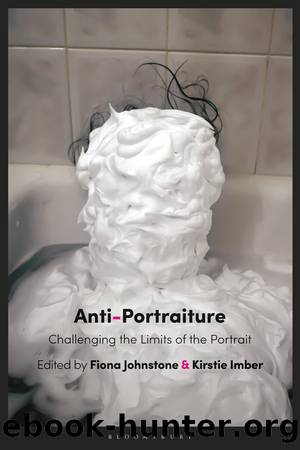Anti-Portraiture by Fiona Johnstone

Author:Fiona Johnstone
Language: eng
Format: epub
Publisher: Bloomsbury Publishing
Images of the artist and the reception of avant-garde art in post-war United States
Morrisâs art from the early 1960s consistently demonstrates an anxious concern regarding the question of whether and to what extent viewers are able to experience something of the artistâs studio practice when they encounter finished works. As Morris has put it, during this period he felt that âmaking objects entailed ⦠a deliberate process that exists in time but is generally not visible in the object. I suppose there is something here that relates to Marxâs analysis of value and the commodity â i.e. how labour is unseen in the commodity.â10
One of his best-known pieces from this period, Box with the Sound of Its Own Making (1961), illustrates this concern especially neatly. This work is a wooden box, containing a tape-recording that Morris made while producing the object, which is played through external speakers. The tape includes the noise of his carpentry as well as other ambient studio sounds, so it is an index of his working practice and perhaps even a kind of auditory portrait. However, in practice it also produces a sense of distance from the artist, since viewers are made highly aware that although they can hear his labour, they cannot actually see it. As in Scale with Hand, spectators are initially invited to experience the artistâs physical relationship with the piece, but it subsequently becomes clear that in reality any route to doing so is barred.
Morrisâs concern that artworks might not offer any means of properly apprehending the artistâs bodily activity should be understood as a reaction to the legacy of Jackson Pollock and his drip paintings. As Amelia Jones has argued, âthe gestural loops of paintâ that feature in these works seem to âtell the âstoryâ of Pollockâs body in actionâ, such that it seems as if viewers can recreate the artistâs process by visually tracing the marks on his canvases.11 Morris has also said as much himself, claiming that in Pollockâs work, âthe process is registered in the way the paint splashes or drips or falls. You have some indication that it was put down that way.â12 As Jones notes, this means that Pollockâs drip paintings âfall clearly on the side of indexicalityâ rather than iconicity, because they indicate Pollockâs bodily movements through a direct, physical connection.13 Morrisâs common use of bodily indexes in works from the early 1960s also suggests a more specific link with Pollockâs drip painting Number 1A (1948), which famously includes several handprints in its top-right corner. As the curator Charles Stuckey has written, these prints are âsignatory, since they bear witness to Pollockâs physical role in the creation of the painting and confirm the interpretation of his work as âaction paintingâ â.14
The particular âinterpretationâ of Pollockâs art that Stuckey referred to in the above quotation had its roots in an essay called âThe American Action Paintersâ, which was written by the critic Harold Rosenberg in 1952. This text was extremely influential in the United States during the 1950s and the early 1960s.
Download
This site does not store any files on its server. We only index and link to content provided by other sites. Please contact the content providers to delete copyright contents if any and email us, we'll remove relevant links or contents immediately.
| Erotica | Human Figure |
| Landscapes & Seascapes | Plants & Animals |
| Portraits | Religious |
| Science Fiction & Fantasy | Women in Art |
The Secret History by Donna Tartt(16667)
Red Sparrow by Jason Matthews(4687)
Harry Potter 02 & The Chamber Of Secrets (Illustrated) by J.K. Rowling(3294)
In a Sunburned Country by Bill Bryson(2954)
Figure Drawing for Artists by Steve Huston(2805)
The Daily Stoic by Holiday Ryan & Hanselman Stephen(2714)
Drawing Cutting Edge Anatomy by Christopher Hart(2685)
The Roots of Romanticism (Second Edition) by Berlin Isaiah Hardy Henry Gray John(2571)
Japanese Design by Patricia J. Graham(2563)
Make Comics Like the Pros by Greg Pak(2432)
Stacked Decks by The Rotenberg Collection(2284)
Harry Potter and the Deathly Hallows (7) by J.K. Rowling(2227)
On Photography by Susan Sontag(2137)
Draw-A-Saurus by James Silvani(2109)
Tattoo Art by Doralba Picerno(2088)
Foreign Devils on the Silk Road: The Search for the Lost Treasures of Central Asia by Peter Hopkirk(2060)
Harry Potter and the Prisoner of Azkaban (Book 3) by J. K. Rowling(2050)
The Traveler's Gift by Andy Andrews(2018)
Churchill by Paul Johnson(2018)
